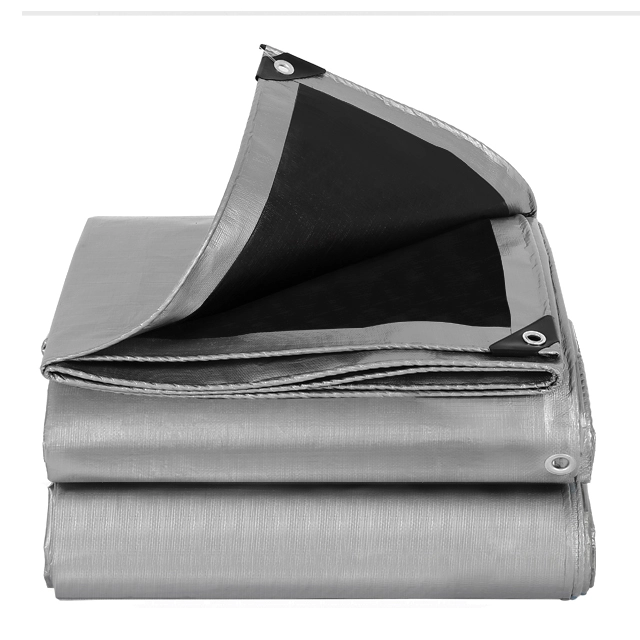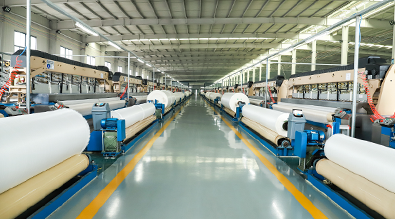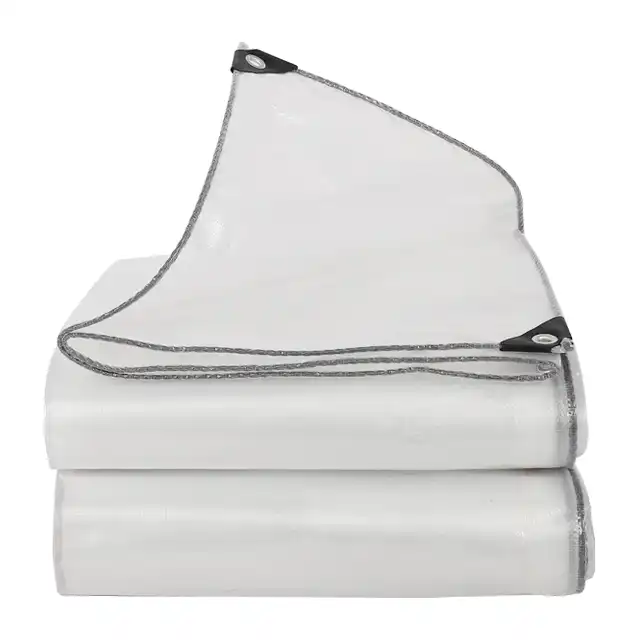Effective Ways to Clean Stains Off Your Tarpaulin
Picture this scenario: you've just unwrapped your tarpaulin after weeks of outdoor use, only to discover unsightly oil stains, mildew patches, and stubborn dirt that simply won't budge with water alone. These persistent stains not only compromise the appearance of your tarpaulin but can also degrade its protective capabilities over time, leaving your valuable equipment and materials vulnerable. Whether you're protecting construction materials, covering agricultural products, or safeguarding recreational equipment, maintaining a clean tarpaulin is essential for maximizing its lifespan and ensuring optimal performance. This comprehensive guide reveals professional tarpaulin stain removal techniques that preserve your tarp's waterproof integrity, tear resistance, and UV protection while effectively eliminating even the most challenging stains.
Understanding Your Tarpaulin Material Before Cleaning

Before implementing any tarpaulin stain removal strategy, understanding the specific composition of your tarp is fundamental to achieving successful results without causing material damage. Modern polyethylene tarpaulins, particularly those constructed from high-density woven fabric with LDPE coating, require specific cleaning approaches that differ significantly from canvas or PVC alternatives. The construction methodology directly impacts cleaning effectiveness and determines which solutions will work optimally without compromising structural integrity. High-quality PE tarpaulins manufactured through advanced processes typically feature tightly woven HDPE fabric laminated on both sides, creating a robust barrier against environmental elements while maintaining flexibility and durability. These tarpaulins often incorporate specialized treatments including UV protection ranging from one to seven percent, which shields the material from harmful solar radiation and prevents premature fading. Understanding these protective coatings is crucial because aggressive cleaning methods or harsh chemical solutions can strip away these treatments, significantly reducing the tarp's effective lifespan and protective capabilities.
-
Identifying Different Tarpaulin Types
The market offers various tarpaulin categories spanning from lightweight applications at approximately 65 grams per square meter to heavy-duty variants reaching 280 grams per square meter, each designed for specific operational requirements. Middle-duty PE tarpaulins weighing between 100 and 180 grams per square meter represent the most commonly deployed category for general covering needs, truck protection, and goods safeguarding applications. These tarpaulins typically feature mesh counts ranging from 10x10 to 14x14, with thickness measurements between 7 and 12 mils, providing balanced protection without excessive weight. When examining your tarpaulin before cleaning, check for manufacturer specifications regarding materials composition, weight classification, and any special treatments applied during production. Quality manufacturers often incorporate features such as arctic flexibility, anti-corrosion properties, and shrink-proof construction that influence optimal cleaning methodologies. Tarpaulins designed for specialized applications like aquaculture impermeable covers or greenhouse fabric may incorporate additional treatments requiring gentler cleaning approaches compared to standard truck covers or construction site protection tarps.
Essential Pre-Cleaning Preparation Steps
Proper preparation before initiating the tarpaulin cleaning process significantly enhances cleaning effectiveness while minimizing the risk of material damage or incomplete stain removal. Begin by selecting an appropriate cleaning location with adequate space to fully spread your tarpaulin flat, ensuring the underlying surface is smooth and free from sharp objects, rocks, or debris that could puncture or tear the material during the cleaning process. A clean concrete driveway, smooth lawn area, or large warehouse floor provides ideal conditions for thorough tarpaulin maintenance. Initial debris removal constitutes a critical preparatory step that many overlook but substantially impacts overall cleaning success. Vigorously shake your tarpaulin to dislodge loose dirt particles, dust accumulation, and organic matter such as leaves or twigs that may have collected on the surface. For particularly soiled tarpaulins used in construction environments or agricultural settings, use a soft-bristle broom or brush to sweep away caked-on dirt and dried mud before introducing any water or cleaning solutions. This dry cleaning phase prevents dirt from transforming into muddy paste during wet cleaning, which can drive stains deeper into the tarpaulin's woven structure.
-
Gathering Necessary Cleaning Supplies
Assembling appropriate cleaning materials before starting ensures an efficient, uninterrupted cleaning process that achieves optimal results. For standard tarpaulin maintenance, you'll need several buckets for preparing cleaning solutions and rinse water, multiple soft-bristle brushes or non-abrasive sponges in various sizes for addressing different stain types and coverage areas, and an adequate supply of mild dish soap or biodegradable detergent specifically formulated for polyethylene materials. Avoid harsh chemical cleaners, bleach-based products, or industrial solvents including acetone, paint thinners, or mineral spirits, as these aggressive substances can damage the tarpaulin's protective coating, compromise its waterproof properties, and accelerate material degradation. Additional supplies that enhance cleaning effectiveness include clean absorbent cloths for blotting fresh stains, a standard garden hose with adjustable spray nozzle for thorough rinsing, and optional specialized products such as water-based biodegradable degreasers for tackling oil-based contamination. For tarpaulins featuring reinforced edges with metal grommets, ensure your cleaning approach addresses these hardware components, checking for rust formation that might transfer stains onto the fabric. Quality tarpaulins from established manufacturers incorporate corrosion-resistant grommets, but regular inspection and cleaning help maintain optimal functionality across all seasons.
Step-by-Step Tarpaulin Cleaning Process
-
Initial Water Rinse and Surface Treatment
Commence your tarpaulin stain removal process by thoroughly rinsing the entire surface using a garden hose set to moderate pressure, which effectively removes surface-level dirt, dust particles, and loose contaminants without forcing debris deeper into the woven fabric structure. This preliminary rinse prepares the tarpaulin for deeper cleaning by softening dried-on materials and providing initial assessment of stain severity and distribution. Pay particular attention to heavily soiled areas commonly found along edges, around grommets, and in sections that experienced direct ground contact or exposure to industrial environments. After completing the initial rinse, prepare your primary cleaning solution by filling a large bucket with cold water and adding a modest amount of mild soap or biodegradable detergent, mixing thoroughly until achieving a consistent soapy consistency. Cold water prevents potential tarpaulin shrinkage that can occur with hot water application, particularly important for tarps featuring precise dimensional requirements for truck covers, car canopies, or custom-fitted applications. The soap-to-water ratio should create visible suds without excessive concentration, as overly strong solutions require more thorough rinsing and may leave residue that attracts dirt accumulation after cleaning.
-
Addressing Common Stain Types
Different stain categories require targeted tarpaulin cleaning approaches to achieve complete removal without material damage. For organic stains including mud, grass, tree sap, or bird droppings commonly encountered on tarps used for outdoor applications like sun shade covers or leisure tents, apply your prepared soap solution directly to affected areas and allow it to penetrate for approximately 10 to 15 minutes before gentle scrubbing with soft-bristle brushes using circular motions. This dwell time allows the cleaning solution to break down organic matter, making removal significantly easier and reducing the physical scrubbing force required. Oil-based stains present particular challenges for tarpaulin maintenance, especially for tarps deployed in industrial settings, construction sites, or transportation applications where contact with petroleum products, lubricants, or machinery fluids occurs regularly. For these stubborn contaminants, apply undiluted dish soap directly onto the stained area, working it gently into the fabric with a clean cloth or soft brush without excessive abrasion. Allow the soap to sit for 20 to 30 minutes, enabling it to emulsify and lift the oil-based materials from the tarpaulin's surface. For extremely persistent oil stains, water-based biodegradable degreasers specifically formulated for polyethylene materials offer enhanced cleaning power without compromising the tarp's protective coatings or structural integrity.
-
Advanced Stain Removal Techniques
Rust stains occasionally develop on tarpaulins, particularly in areas surrounding metal grommets or when tarps are stored in contact with oxidizing metal surfaces. Creating a natural cleaning paste using equal parts lemon juice and common table salt provides an effective, non-toxic solution for rust removal that works safely on all tarpaulin colors without causing discoloration or material degradation. Apply this paste generously to rust-affected areas, allowing it to work for approximately 30 minutes before scrubbing gently and rinsing thoroughly with clean water. Mildew and mold represent serious concerns for tarpaulin longevity, developing when tarps are stored improperly while damp or deployed in consistently humid environments without adequate air circulation. For mildew treatment on polyethylene tarpaulins, create a solution combining one part hydrogen peroxide with ten parts water, offering effective antimicrobial action without the harshness of chlorine bleach that can degrade polyethylene materials. Apply this solution to affected areas, let it sit for approximately 10 minutes allowing the hydrogen peroxide to neutralize mold spores, then scrub gently and rinse completely. Prevention remains the most effective mildew management strategy, emphasizing the importance of complete drying before storage and regular inspections during extended deployment periods.
Proper Rinsing and Drying Procedures
Thorough rinsing constitutes an absolutely critical phase in professional tarpaulin stain removal that directly impacts long-term material performance and appearance retention. After completing all scrubbing and stain treatment procedures, rinse your tarpaulin extensively using clean water from a garden hose, ensuring complete removal of all soap residue, cleaning solution remnants, and loosened dirt particles. Inadequate rinsing leaves behind soap deposits that attract and bind dirt particles during subsequent use, necessitating more frequent cleaning cycles and potentially reducing the tarpaulin's effective service life. Pay meticulous attention to areas around reinforced edges, corner sections, and grommet locations where soap and cleaning solutions tend to accumulate and prove more difficult to rinse completely. Continue the rinsing process until water running off the tarpaulin appears completely clear without any soap suds or cloudy appearance indicating residual cleaning product presence. This comprehensive rinsing approach maintains the tarpaulin's easy-to-handle characteristics and preserves its waterproof functionality that makes quality PE tarpaulins indispensable for protecting goods, covering materials, and safeguarding equipment across diverse applications.
-
Complete Drying Before Storage
Proper drying methodology represents the most crucial factor in preventing mildew development, material degradation, and odor formation during tarpaulin storage periods. Never fold or store your tarpaulin while any portion remains damp or wet, as trapped moisture creates ideal conditions for mold spore germination and bacterial growth that compromise material integrity and create unpleasant odors. Instead, hang your cleaned tarpaulin over a smooth clothesline, privacy fence, or similar structure that allows air circulation around both sides, facilitating complete moisture evaporation. For larger tarpaulins used in commercial applications such as truck covers or construction site protection, spread them flat on clean, smooth surfaces like driveways or warehouse floors where adequate ventilation promotes efficient drying. Periodically flip or reposition the tarpaulin during the drying process to ensure even moisture removal from all sections, paying particular attention to thicker areas around reinforced edges and corner reinforcements that retain moisture longer than standard fabric sections. Complete drying typically requires several hours depending on weather conditions, humidity levels, and tarpaulin thickness, but investing this time prevents far more serious problems including permanent mildew staining, material weakening, and premature replacement necessity.
Seasonal Maintenance and Inspection Guidelines
Implementing a structured seasonal maintenance schedule for your tarpaulin investments maximizes their operational lifespan while ensuring consistent protective performance across varying environmental conditions. Different seasons present unique challenges requiring specific maintenance approaches tailored to weather patterns, usage intensity, and environmental exposure factors. Spring maintenance should focus on assessing any winter damage, removing accumulated grime from wet weather exposure, and addressing any mildew development that may have occurred during cold, damp conditions when tarpaulins often remain deployed for extended periods without regular inspection. Summer tarpaulin care emphasizes removing organic contaminants including tree sap, pollen accumulation, and bird droppings that prove particularly abundant during warm months and can cause permanent staining if left untreated. These organic materials often contain acidic compounds or pigments that bond with tarpaulin surfaces, making prompt removal essential for maintaining appearance and preventing material degradation. Fall preparation requires thorough cleaning before potential storage, removing fallen leaves and organic debris that can decompose and create staining if left in contact with tarpaulin surfaces during winter storage periods.
-
Long-Term Storage Best Practices
When storing tarpaulins between usage periods, proper preparation and storage methodology significantly impact their condition and readiness for future deployment. After ensuring complete drying as previously discussed, fold your tarpaulin neatly using consistent folding patterns that distribute stress evenly across the material rather than creating permanent creases that can develop into weak points or crack lines. For tarpaulins with specialized coatings or treatments, rolling rather than folding may prove superior, preventing compression damage to protective layers while maintaining material flexibility. Store folded or rolled tarpaulins in cool, dry locations protected from direct sunlight exposure, which can cause UV degradation even during storage periods for tarpaulins not specifically treated for extended solar exposure resistance. Avoid storage in areas with temperature extremes, high humidity, or potential pest access, as these conditions promote material degradation, mildew formation, or physical damage from rodents seeking nesting materials. Quality tarpaulins manufactured with proper UV treatment, arctic flexibility, and anti-corrosion properties withstand storage conditions better than economy alternatives, demonstrating superior condition retention across multiple seasonal cycles.
Conclusion
Maintaining clean, stain-free tarpaulins through regular care and proper cleaning techniques significantly extends their functional lifespan while preserving the protective capabilities that make them essential for countless applications. By understanding your tarpaulin's specific material composition, implementing appropriate cleaning methodologies, and following thorough rinsing and drying procedures, you ensure optimal performance and maximum return on your tarpaulin investment across years of reliable service.
Cooperate with Linyi Shengde Plastic Co., Ltd.
Looking for a trusted China tarpaulin manufacturer that delivers exceptional quality and reliability? Linyi Shengde Plastic Co., Ltd., established in 2003, stands as a leading enterprise in the Chinese PE tarpaulin field with over 20 years of manufacturing excellence and innovation. As an expert-grade China tarpaulin supplier and China tarpaulin wholesale partner, we operate advanced production facilities spanning 60,000 square meters, featuring 400+ Korea-imported automatic water-jet looms, unique 5-meter width weaving capabilities, and advanced coating machinery that ensures superior product quality.
Our commitment to excellence has earned partnerships with prestigious international organizations including UNHCR, IOM, ICRC, and UNICEF, demonstrating our capability to meet the most demanding quality standards. As a trusted China tarpaulin factory, we've maintained ISO 9001:2015 certification and export High Quality tarpaulin products to over 30 countries worldwide, building our reputation through reliable quality, fair tarpaulin prices, prompt delivery, and exceptional customer service. Whether you need standard PE tarpaulin sheets or customized solutions for specialized applications, our experienced R&D team delivers products precisely matching your requirements.
Ready to experience the Shengde difference in tarpaulin quality and service? Contact our team today at info@shengdetarp.com to discuss your specific requirements, request samples, or obtain competitive quotes for tarpaulin for sale. Discover why businesses worldwide trust Linyi Shengde for their critical tarpaulin needs.
References
1. Cleaning and Maintenance of Industrial Textiles - Smith, Robert J. and Martinez, Elena. Industrial Fabrics Association International, 2022.
2. Polyethylene Tarpaulin Properties and Care Guidelines - Chen, Wei and Thompson, David. Journal of Protective Coverings, 2023.
3. Best Practices for Textile Protection Product Maintenance - Anderson, Sarah K. Technical Textile Maintenance Quarterly, 2024.
4. Stain Removal Techniques for Synthetic Woven Fabrics - Williams, Michael R. Association of Specialty Textile Care, 2023.




